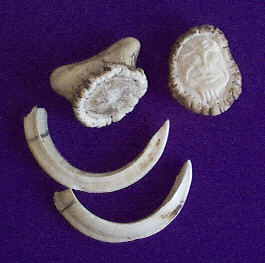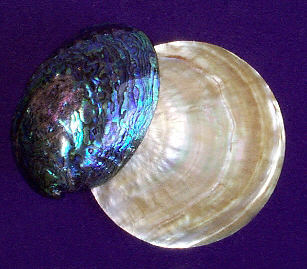
The Bone Studio and Gallery ... 
Deer Antlers, Horns, Tusks and Shells
One of the premises I have always worked under is
"It's not what can you carve, it's what can't you carve?"
The answer being pretty close to nothing. I've even seen some amazing things carved out of toothbrush handles! It's a massive task to give detailed information on everything that has ever been hacked into by someone with a chisel or a chainsaw ... but here goes!
The following is a brief description of what you can carve:
Deer Antler

The piece between the top of the skull and the main shaft of the antler is traditionally used by Japanese netsuke carvers. It is solid, clear grained and usually very white. The antler tips are solid and relatively soft to carve and can be polished. The main shaft is often used for knife handles and has at least 5 mm below the rough exterior that can be carved.
Horns
Horn is fairly soft to carve and holds nice detail. It has some grain but doesn't "rough-up" like wood. Sands and polishes easily and comes up well with periodic oiling with linseed oil.
Tusks
Ivory being the most obvious of these but, unfortunately, plenty of people have used them before I came along. A beautiful material to work on and large clean white carvings with good (perfect!) detail holding capability. I have only occasionally worked on ivory when I have been able to recycle it from old statues, piano keys and the spots from bowling balls. Distinguishable by the criss-cross end-grain structure usually observed on the base of a statuette.
Pig tusks are often obtained in New Zealand (plenty of pig hunters) and large ones have a good chunk of carvable material after the very hard enamel is ground off.
Shells

A lot of beautiful work is done with shell -- and plenty of cheap rubbish!
The most often used shell in New Zealand is the paua shell. It comes from a large black marine snail and, whilst similar to abalone, it is far superior in colour. Also used is the mother-of-pearl oyster shell which comes in gold and black/silver. These shells can be very large, with very little grain and awesome colour. Some beautiful pieces are made from it or have it used as inlays. Less available are green and red mussell shells which have subtle and strong colour with a lot of variation according to the way it is carved and viewed. all of these shells have toxic dust and so a quality dust mask or respirator must be used whilst working with it.